Existing User Log In
New User Registration
Register for a free account to gain full access to the VGChartz Network and join our thriving community.



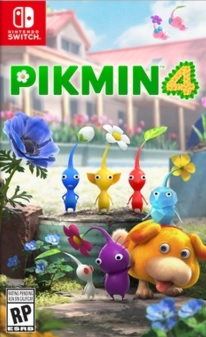

America - Front
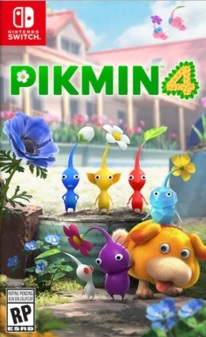

America - Back

Nintendo
Strategy
 07/21/23 Nintendo
07/21/23 Nintendo  (Add Date)
(Add Date) 07/21/23 Nintendo
07/21/23 Nintendo
| Owners: | 5 | |
| Favorite: | 1 | |
| Tracked: | 1 | |
| Wishlist: | 0 | |
| Now Playing: | 0 | |
Pikmin is one of those series that’s really hard to explain in a way that makes it sound appealing. Shigeru Miyamoto gave an interview earlier this month where he wondered aloud why Pikmin wasn’t more popular, and after thinking about it for all of five seconds I think I’ve got his answer. Try figuring out a way to market “manage a hoard of midget vegetable creatures in a quest to collect a bunch of items while fending off local wildlife and turning their corpses into more vegetable midget creatures”, in a way that doesn’t come off as completely psychotic. Nintendo certainly hasn’t.
Nevertheless, I will try and explain what appeals to me about Pikmin. Underneath the cutesy facade of the adorable creatures (and the less cutesy but equally prevalent facade of wiping out entire ecosystems to make Pikmin the dominant species), Pikmin is about efficiency. The first Pikmin encapsulates this concept the best, in my opinion, giving the player 30 days to collect 30 ship pieces scattered across 5 different areas. Days have a limited amount of time, and the number of total days you have is also limited, making planning and smart decision-making crucial. The rising sense of tension as your timer slowly approaches zero days, and as a grim fate for the main character, Olimar, grows closer and closer, lends a very unique feel to Pikmin; a charming exterior with much more nefarious undertones.
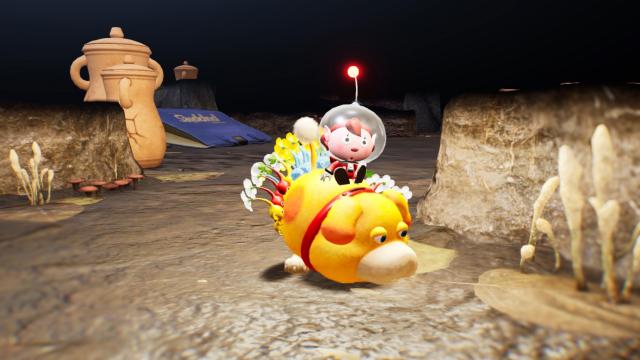
22 years after that title, Pikmin 4 is finally here, and starting a new beginning in its own right. After two mainline games and a spin-off that built on the story of the original release, Pikmin 4 is a soft reboot, with Captain Olimar once again crashing on an unknown planet and needing to escape before his life support system fails. This time around, however, we don’t play as Olimar, but instead as a customizable character sent to rescue him (or, more accurately, sent to rescue both Olimar and the rescue squad that was sent to rescue him, but now needs rescuing itself).
It quickly becomes clear why it took so long: this is a massive game, with much more to do than previous titles. The first half alone probably has as much content as any other entry in the series, and beating it to completion with around 80% of the game’s treasures collected took me about 30 hours. The environments are a big part of this; they’re extremely open-ended and far more non-linear than any other Pikmin release. They’re also much more vertically designed, with hills, bridges, and taller objects like huge tables and castles being standard fare. My personal favorite is the third region which, without wishing to spoil too much, features a very cool dynamic effect that changes key elemental parts of the level at noon each day. I’d love to see future entries expand on this concept even more.
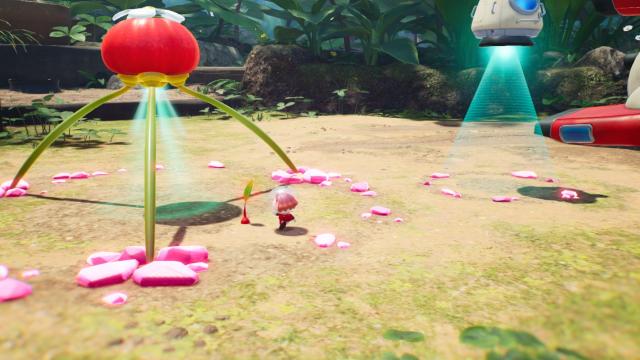
The core gameplay is, on its surface, standard Pikmin fare. At the start of each day, you choose an area to explore and search for key items and treasure to carry back to base. Most of these items are much bigger than your playable character, however, and so require the use of Pikmin to help you transport them. This makes growing more Pikmin an ever-present secondary objective, and that’s accomplished by defeating various creatures throughout the world and dragging them back to your base to create more Pikmin. Each day is a limited time slot (roughly 20 minutes), and at the end, any Pikmin that aren’t in your party or in close enough proximity to your ship are left behind and will be lost at the hands (or teeth) of nocturnal predators.
Certain collectable objects can’t be reached at first due to being behind some kind of gameplay barrier, and that’s where the different Pikmin types come into play. You’ll encounter quite a few different types of Pikmin while exploring, and each has some kind of unique ability, as well as a hazard or barrier only they can deal with. With eight different Pikmin types (nine if you count the limited use Glow Pikmin), balancing them all and giving each one a useful role while not being overpowered presents a significant challenge. Pikmin 2’s solution to this conundrum was to make its most powerful Pikmin type (Purple) only acquirable in certain locations and not be something you could generate more of normally, while Pikmin 3’s solution was to just give up immediately and let Rock and Winged Pikmin overshadow basically everything else.
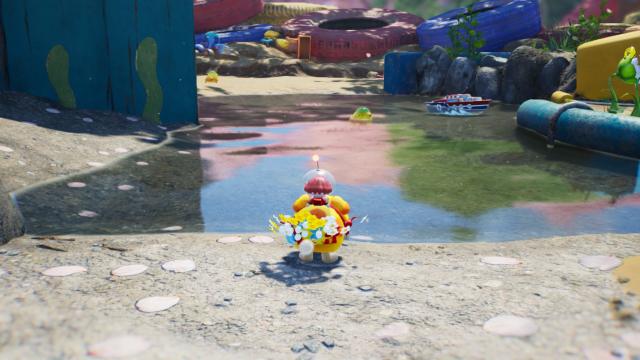
Pikmin 4 takes the middle ground here, and I think it works the best of those three titles. Pikmin 4’s solution is to let onions be discovered independently from Pikmin themselves, allowing you to discover Pikmin types in caves before you have the ability to generate more of them normally. The game limits your access to the more powerful/higher utility Pikmin types early on, while still letting you go all out with creating armies of them in the late game. This means the less useful types still have a role to play; early on, Reds, Yellows, and Blues will make up the bulk of your army, and in the late game they effectively get replaced by the much higher utility types like Rocks, Winged, and Ice.
Enemy variety is the best it's been in the series to-date, with a wide selection of creatures and the occasional eldritch horror with no greater ambition in life than to turn your meticulously crafted army into lunch. I will say that later game enemies do all feel a bit too susceptible to the strategy of freeze with Ice Pikmin and then chuck Rock Pikmin until they shatter, but they’re all pretty visually interesting and most of the larger baddies can really throw a wrench in your day if they catch you unaware.
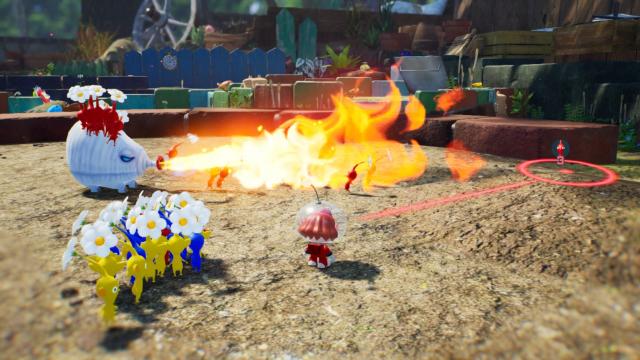
NPC AI has always been an issue for the series, but Pikmin 4 does make strides here, with the Pikmin’s AI now improving from being completely atrocious to merely bad. Pathfinding is much improved for the little buggers, and they don’t walk straight into hazards trying to chase you any longer (at least not as often), but they’re still very stupid on the battlefield. In the middle of a chaotic scenario they always seem to prioritize the absolute worst possible option, like transporting a dead creature instead of tackling the very much alive one that's currently trying to turn your army into an all-you-can-eat buffet. Maybe programming AI in a game like this is really difficult, but it feels like picking up items when someone is trying to kill you should be something it basically never does.
Frankly the quality-of-life changes in general feel like something of a mixed bag - there are quite a few alterations that seem like significant improvements at first, but eventually reveal themselves to be double-edged swords. For example, enemies don’t appear to respawn after death regardless of how many days you wait, which is nice for moving items through previously-visited locations without fear of having your Pikmin devoured, but also makes it very hard to grind for new Pikmin if you’ve lost a bunch, and makes the world feel very empty and lifeless. There’s also a new auto-lock mechanic that will target the first thing that comes into view. This can be useful when there’s only one lockable target in the area, but it quickly goes to hell when multiple targets appear. If you happen to be fighting an enemy next to a treasure or some corpses, or trying to target one particular enemy in a group, then prepare for the game to target all of the wrong ones and be extra finicky about how it cycles through things.
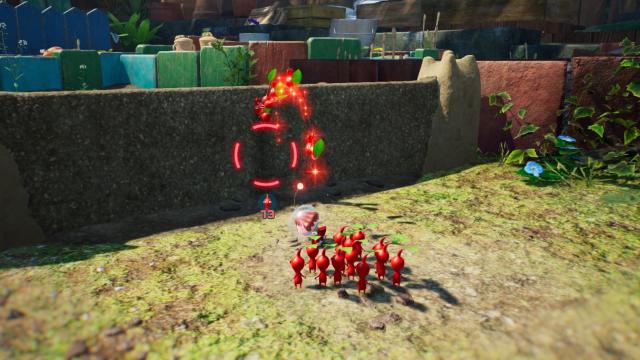
Another change is the whistle, which now takes slightly longer to get the attention of Pikmin who are currently moving something. This is good for when you want to call idle Pikmin in an area while not interrupting a group in the process of transporting an item, but very bad if you want to get the attention of some idiots who are trying to move a puzzle piece while a mecha spider with a machine gun prepares to wipe them off the face of the planet.
That being said, there are some quality-of-life changes that are good without qualification. The items for calling idle Pikmin to your location or back to base are extremely useful time saves, and the drone that allows you to survey the entire region from the get go is very helpful for identifying points of interest. Another much-appreciated new feature is the ability to re-enter caves from a specific floor, rather than having to travel through all the previously finished floors like in Pikmin 2. The streamlining of building materials into a single, catch-all currency that can also be used on upgrades is a neat addition as well, and there are a few upgrade mechanics that provide some room for a bit of decision-making.
Pikmin 4 isn’t just refinements, however; there are a few significant new mechanics as well. The biggest new feature is the dog, Oatchi, which functions like a cross between a second controllable player and a super Pikmin. You can command him to carry items, attack enemies, and even sniff out objects. Or, if you’re feeling hands-on, you can take control of him directly and maneuver around the environment while commanding Pikmin with him, acting sort of like the second captain in Pikmin 2 and 3. The game does a good job of making him useful without feeling like he overshadows the actual Pikmin.
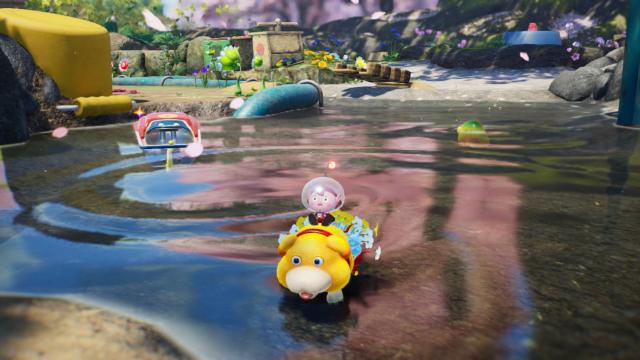
Another example would be the highly-advertised contests of Dandori (which, as the game helpfully tells you about 5,000 times, translates roughly to something like “efficient planning”). Every so often, you’ll run across someone who looks like a reject from the Muppets, and they’ll teleport you to a random location that looks like one of the Bingo Battle stages from Pikmin 3. Here, they’ll challenge you to either collect a certain amount of items in a short time, or battle you to see who can collect the most stuff within a time limit. It’s a nice change of pace that makes things feel more challenging when the rest of the game is far more leisurely.
The last big change is more disappointing, however. Night-time expeditions were a feature that I think most Pikmin fans were intrigued by when they were announced, but “expeditions” they are not. Basically, you travel to a previously-visited area at night and protect a nest from approaching creatures with your dog and a new type of absurdly overpowered Pikmin. It’s very easy and pretty repetitive after the first couple of maps; there’s no real interesting spin put on it besides sometimes having to defend multiple nests rather than just one, and even then the enemies are usually polite enough to only attack one at a time. After clearing about 20 stages, with no end in sight, I just got bored and stopped playing them (after a certain point they became optional, which I was very thankful for). There are a lot of reasons I enjoy Pikmin, but “tower defense” has never been one of them.
Pikmin 4 is clearly a game with a ton of love and charm put into it; the sort of thing that's hard to criticize because it feels like stepping on a puppy. From the Pikmin humming songs from prior games while navigating the world, to callbacks and references to other titles in the series, it’s clear that Miyamoto really loves Pikmin and wants it to be widely liked. And pretty much all of the critiques I have are really just nitpicks in the face of everything it does right. All of my criticisms, that is, except for one...

I’m not sure exactly what to call Pikmin 4. Nintendo allegedly refers to it internally as a “Dandori” game, while others call it real time strategy. I’m going to assume at least one of these is right, and that Pikmin is supposed to encourage its players to plan efficiently and strategically. In other words, engaging in the ancient art of Dandori. However, despite the huge focus on Dandori, from the constant in-game dialogue references, to the messages on loading screens, and the titular battles, there’s very little incentive to actually participate in that practice while exploring the world. Outside of the sectioned-off Dandori contests, there’s no punishment for being slow while exploring the world, and there’s no tangible benefit to progressing through the game in an efficient manner beyond getting to go outside and touch grass faster. Exploring haphazardly with no routine in mind is just as good as, and perhaps even better than, formulating and executing a plan to collect items at the start of the day, as you can have a better lay of the land before you start collecting things and won’t be surprised by powerful enemies. Pikmin 4 contains an absolutely massive amount of things to collect, but without any incentive to be strategic about how you collect them, it isn’t really much of a “real time strategy” game, as it’s labeled. It’s more of a collectathon with very light strategy elements, and there isn’t enough variety across the 30 or so hour runtime to prevent collecting things from growing dull by the end.
What’s interesting is that, within the game itself, there’s a fantastic example of just how much better Pikmin becomes with an element of tension forcing you to be smart about how you plan it. A little past the halfway point, a prologue side story mode unlocks, which tasks you with collecting 30 items spread throughout previously-visited areas within a 15 day timer. The addition of that timer, small as it might seem, added so much to the experience.
All of a sudden I found myself using every tool at my disposal, including things I had barely touched in the main game prior to that point. I wound up multitasking far more between the two playable characters, planning out where to go, how to accomplish tasks with one character while the other one was in transit, etc. Tougher enemies went from being minor annoyances that I would casually rock up to with 100 Pikmin and completely demolish at my leisure, to being genuine obstacles that I either had to deal with as soon as possible or carefully avoid. I finished this mode, without resetting or rewinding, with a day and a half left to spare, and felt about as accomplished as I have beating any video game this year. I’d argue this might realistically be the best Pikmin content in existence, and it’s unfortunately relegated to a completely optional side mode.

I know not everyone loves time pressure in their games; many were turned off the original Pikmin and other titles like Majora’s Mask and Dead Rising for being built around such a mechanic, so I don’t blame Nintendo for wanting to appeal to those who prefer a more leisurely approach to exploration and gathering. But I’d argue this sort of thing should at least be an option, perhaps in a manner similar to how Fire Emblem incorporated a casual vs. classic mode. Perhaps a Pikmin 4 “classic” mode could’ve had a day limit, or a timer that could be extended by gathering the key items, like in Pikmin 3.
In many ways, playing Pikmin 4 feels like being given the Skyward Sword treatment; there are countless things designed to make it easier, from the insipid amount of tutorializing, to characters chiming in about how to progress past certain obstacles, to the finger of God-esque lightning strikes you can call in to stun and hold a boss in place while you get free damage in. There’s even a frankly insulting rewind feature that the game reminds you of without fail every time you make a mistake costing a significant amount of Pikmin, just in case you're completely terrified of any sort of meaningful stakes while playing. Yet there’s nothing for players who are looking for more challenge in the base game - not even an unlockable, minimal-effort hard mode like the one in Pikmin 3 Deluxe.
And frankly the sheer length of the game works against it here. One could at least semi-reasonably make up for the lack of a challenging time limit in Pikmin 3 by self-imposing a stricter day count on repeat playthroughs, but the longevity of Pikmin 4 makes repeat playthroughs a harder ask. I do want to stress that I’m not trying to argue that a game being longer or having more content is bad, but they usually don’t have the benefit of replayability, and thus it’s more important for them to nail the initial playthrough. Pikmin 4 is longer, but doesn’t achieve that, and suffers more as a result compared to Pikmin 3.

One final nitpick is the lack of a meaningful campaign co-op option, despite there being one in Pikmin 3 Deluxe. While in the main story, co-op mode is stripped down to a Super Mario Galaxy-esque projectile shooting role, and this is especially disappointing when a secondary captain in Oatchi is already included. Sure, it might be a little weird to deal with segments where the protagonist character has to ride on Oatchi to clear ledges and other jumpable objects, but Pikmin 3 also had segments where Captains had to collaborate to cross certain areas, and that was implemented fine. At least there are some more traditional multiplayer offerings, such as cooperative and competitive item collection.
Aesthetically, there isn’t much to complain about. Pikmin 4 looks great, and is up there with Metroid Prime Remastered and Luigi’s Mansion 3 as one of the best-looking Switch titles. The resolution and framerate aren’t spectacular, clocking in at 900p and 30fps, but the general art design and texture quality is so good that they overcome a lot of the technical limitations. The water effects are particularly gorgeous; Nintendo’s clearly done a lot of work to make this look as good as it does on older hardware.

I wind up coming away from Pikmin 4 generally happy, but not as much as I wish I was. There’s a lot of good here, and it's clearly a game of immense passion. If you're someone who holds up Pikmin 2 as the high-water mark in the series then you'll probably unabashedly love this game, as it can be crudely described as 'Pikmin 2 with most of the rough edges smoothed out and a variety of mostly-positive new features'. For me, however, I’d argue the first Pikmin is still the high-water mark for the series. Despite the quality of life features that game lacked, it was unquestionably about efficiently using your time, or “Dandori,” if you will. I’m frankly not sure what the main focus of Pikmin 4 is. Nintendo claims it’s about Dandori, but with the exception of an (admittedly great) side story mode, there rarely seems to be much in Pikmin 4 that encourages efficient time usage. Pikmin 4 is a mostly-good collectathon with some occasional leaps into greatness that showcase its true potential as a series, but it doesn’t commit enough to these to become truly great.
You will probably love Pikmin 4 if: You think Pikmin 2 is the best entry in the series or you have a soft spot for collectathons with cute things.
You will probably "only" like Pikmin 4 if: You enjoyed other Pikmin titles more than Pikmin 2 and you really enjoy being challenged to plan your moves efficiently.
You might like Pikmin 4 if: You enjoy real time strategy games and don't mind some patented Nintendo weirdness to spice things up.
You will probably not like Pikmin 4 if: You dislike management style games, or don't want to put up with a game that will occasionally punch you in the face and laugh at you without warning.









